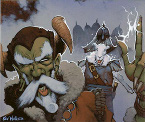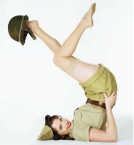BBfanboy
Posts: 18046
Joined: 8/4/2010
From: Winnipeg, MB
Status: offline

|
quote:
ORIGINAL: HansBolter
quote:
ORIGINAL: crsutton
quote:
ORIGINAL: Canoerebel
I've been reading an old book on Trees of America, published by the American Forestry Society a long time ago. I enjoy the descriptions of trees, the information about uses of the wood and how much a cubic foot weighs air-dried (live oak, our heaviest wood, is nearly double the weight of spruce and basswood and others). Another thing I enjoy about the book is that the photos seem to have been taken from the '30s to perhaps the '50s - the trees are the focal point but it's interesting to see fences and buildings and farm fields and wide open spaces....and no cell phone towers or wind turbines or McDonalds (stuff like that was present, but not like today).
Another thing I've enjoyed is refreshing my memory about the botanical (scientific) names of trees. So many of them are beautiful: Thuja occidentalis (northern white cedar); Chamaecyparis thyoides (Atlantic white cedar), Diospyros virginiana (persimmon), Liquidambar styraciflua (sweetgum), Lireodendron tulipifera (yellow poplar) and a host of others. There's poetry in the botanical names of trees.
The genus name of the apple is Malus, as Lokasenna is referring to. Apples, pear, plum, rose, hawthorne, prune, blackberry and a zillion other fruiting plants are in the Roseacea (rose) plant family.
I enjoy knowing that, so sitting around reading an old book by the American Forestry Society is time well spent.
Especially when there aren't any Braves games on the radio!
I read the excellent "Six Frigates" last year. One thing I did not know was that the first American frigates were framed with live oak and this is what gave them their amazing resistance to damage-not the white oak planking. So Old Ironsides should have been called Old Ironframe. However, that just does not sound too good.  The British has no access to wood like the live Oak. It really gave the American ships a huge tactical edge. The British has no access to wood like the live Oak. It really gave the American ships a huge tactical edge.
Weren't the hulls also double walled with an airspace? Seem to recall that description from Master and Commander as the French frigate he was fighting had been purchased from the US and one of his deck hands had seen one the type under construction.
yea, yea....I recognize the danger of relying on movie quotes for historical accuracy....
Saw a TV show where they test militaria. In that one they built replicas of the wall of a standard British warship and one replicating the US frigate design (which was indeed multi-layered and may have included live oak walls near the waterline). They proceeded to fire a cannon at both replica walls. The shot punched through the British wall sending large numbers of wood splinters from the back as it passed through. The shot that hit the American design cracked the outer wood but could not punch through.
_____________________________
No matter how bad a situation is, you can always make it worse. - Chris Hadfield : An Astronaut's Guide To Life On Earth
|
 Printable Version
Printable Version







 The British has no access to wood like the live Oak. It really gave the American ships a huge tactical edge.
The British has no access to wood like the live Oak. It really gave the American ships a huge tactical edge.




















 New Messages
New Messages No New Messages
No New Messages Hot Topic w/ New Messages
Hot Topic w/ New Messages Hot Topic w/o New Messages
Hot Topic w/o New Messages Locked w/ New Messages
Locked w/ New Messages Locked w/o New Messages
Locked w/o New Messages Post New Thread
Post New Thread